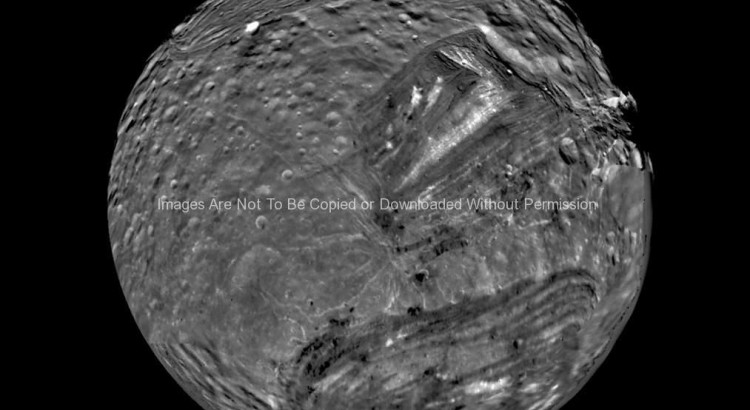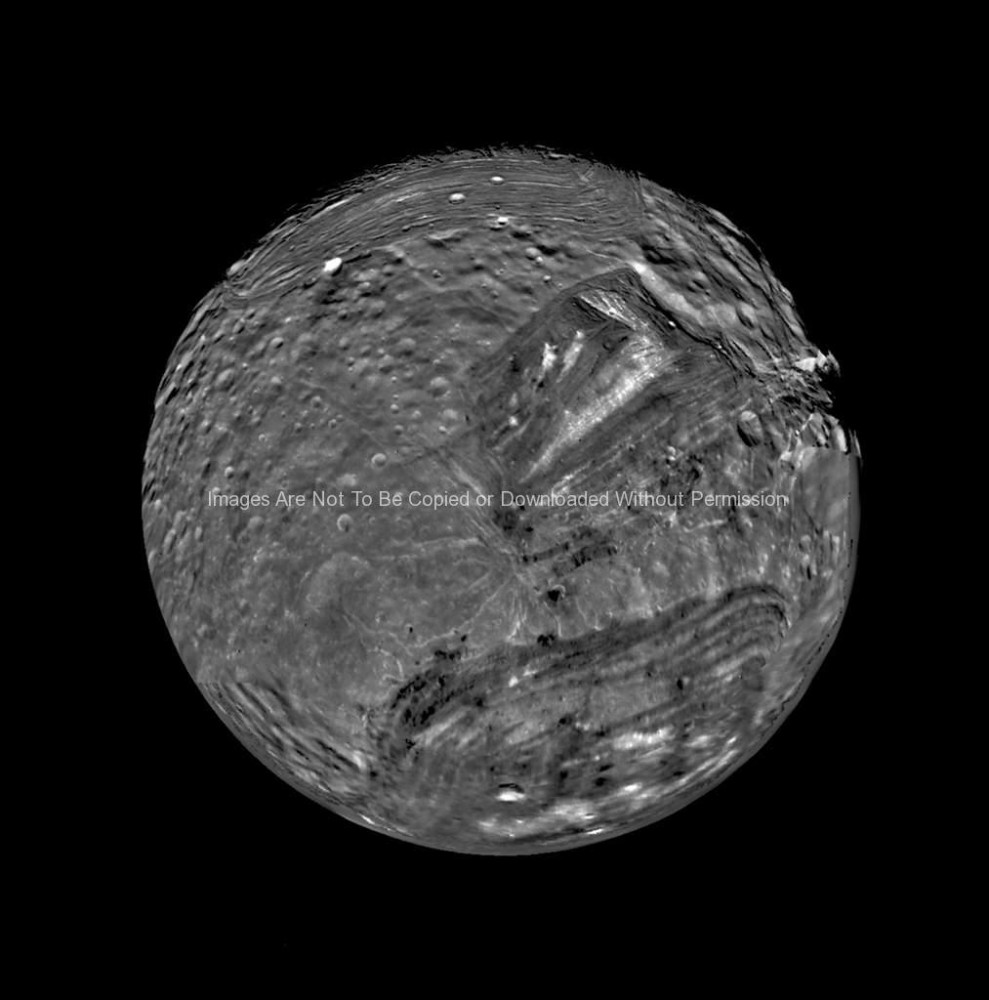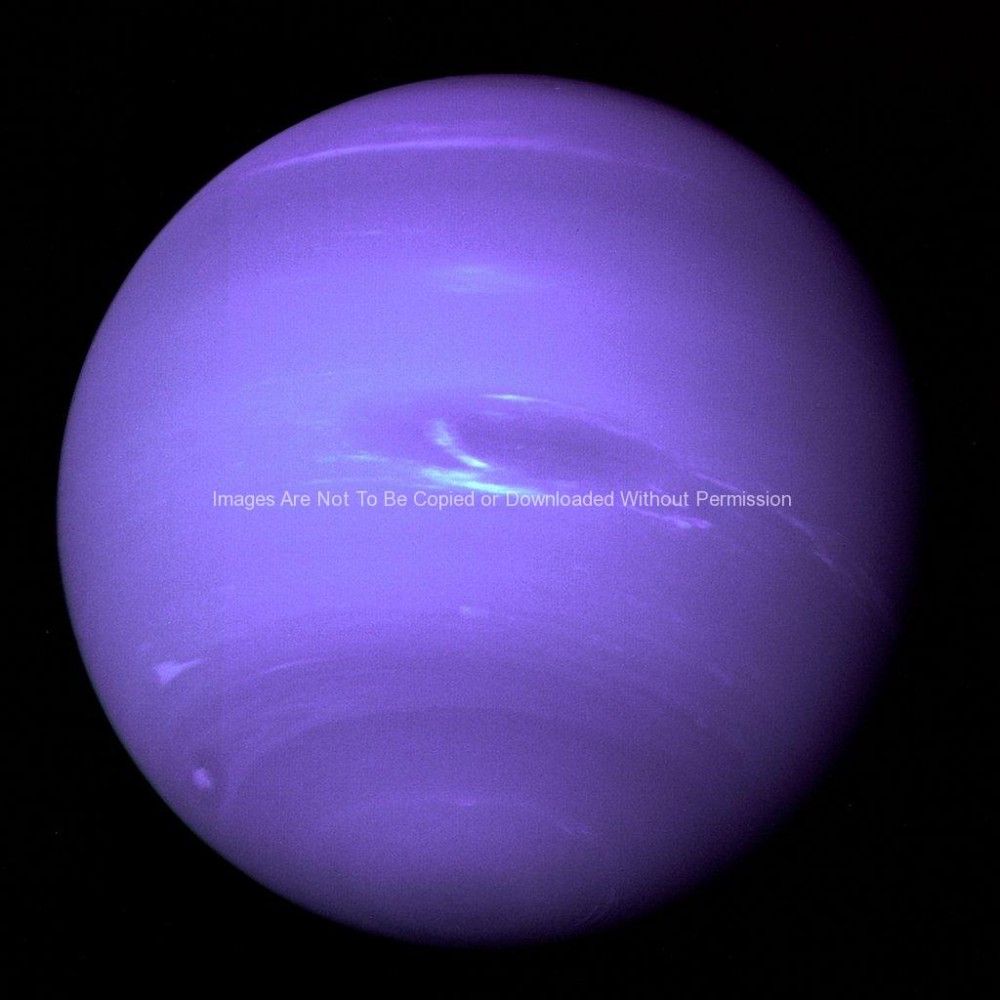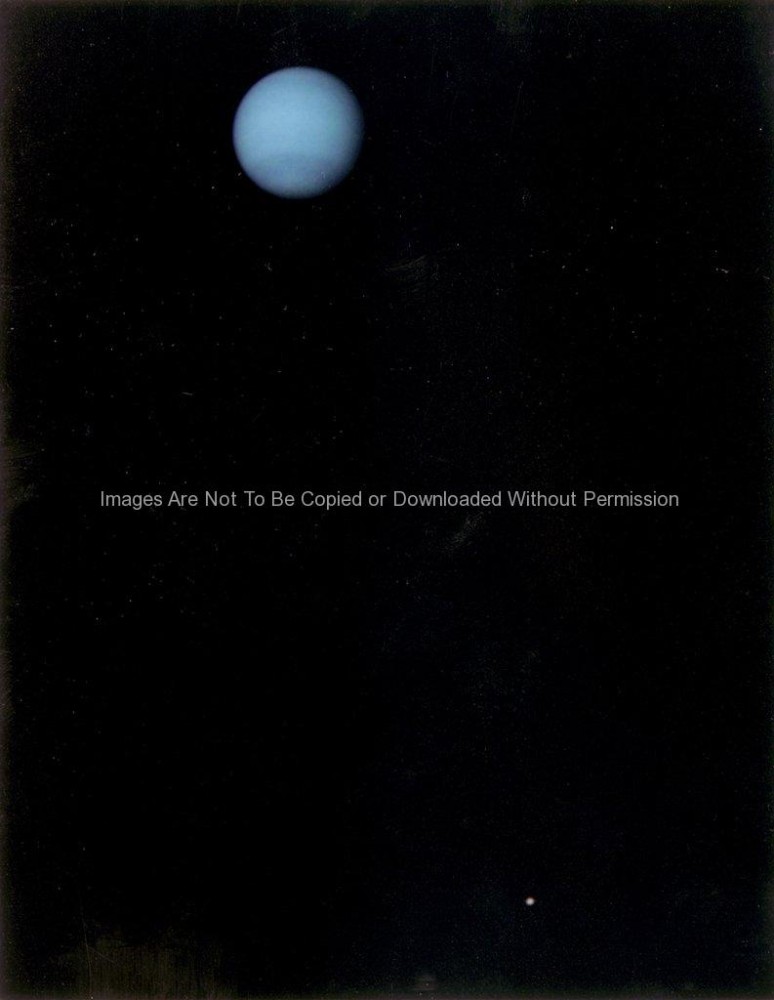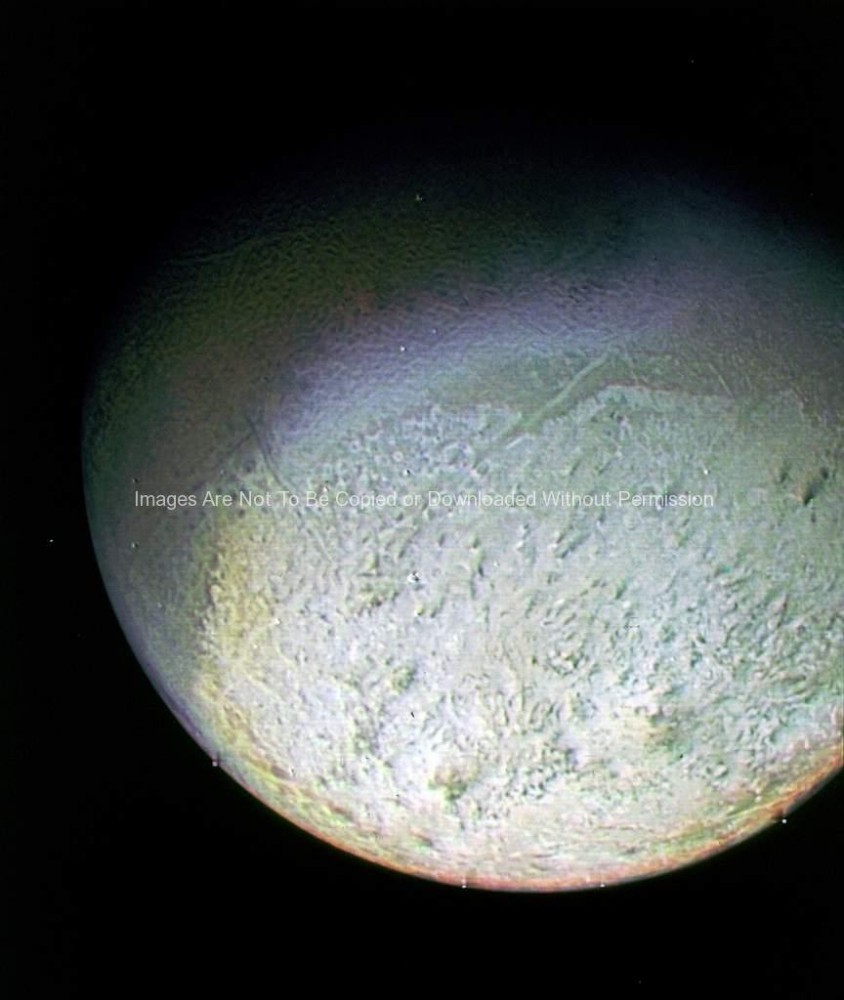NASA Stock Photos – Flying by in early 1986, Voyager 2 captured this picture of Miranda, which enabled scientists to study this moon of Uranus in much greater detail than ever before. Discovered in 1948 by Gerard Peter Kuiper, Miranda is named for the daughter of the wily Prospero in Shakespeare’s “The Tempest.” It is the eleventh known satellite of Uranus and the innermost large moon of Uranus It was necessary that Voyager 2 passed by Miranda, not for scientific reasons, but simply for the gravity assist it needed to go on to Neptune. Due to the position of the entire Solar System, Miranda provided the energy to throw Voyager 2 to Neptune. Before Voyager, Miranda was largely ignored as it is not the largest moon and did not seem to have any other outstanding qualities. Fortunately, however, Voyager passed close enough to Miranda to provide scientists with fascinating photographs that captivated astronomers. About half ice and half rock, Miranda’s surface has terraced layers that indicate both older and new surfaces coexisting. Since the mixing of ancient and recent surfaces is rare in planetary geology, scientists have postulated two explanations for the different ages of the numerous valleys and cliffs on Miranda. One theory is that Miranda could have shattered as many as five times and was then reassembled. Another hypothesis is that partly melted ice upwells forced new surfaces to emerge.
space images
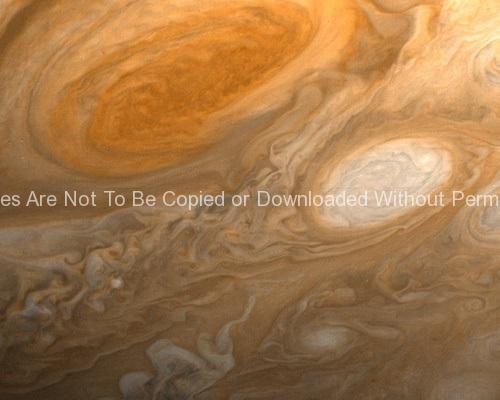
Jupiter’s Great Red Spot
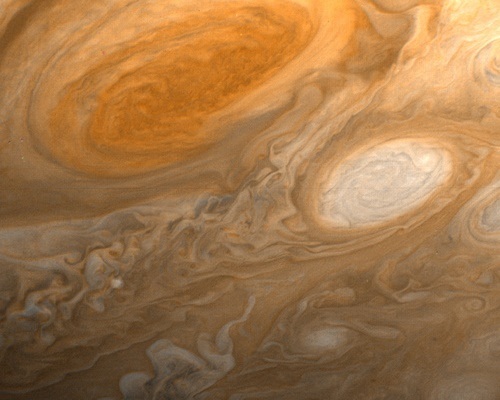
NASA Stock Photos – As Voyager 1 flew by Jupiter, it captured this photo of the Great Red Spot. The Great Red Spot is an anti-cyclonic (high- pressure) storm on Jupiter that can be likened to the worst hurricanes on Earth. An ancient storm, it is so large that three Earths could fit inside it. This photo, and others of Jupiter, allowed scientists to see different colors in clouds around the Great Red Spot which imply that the clouds swirl around the spot (going counter-clockwise) at varying altitudes. The Great Red Spot had been observed from Earth for hundreds of years, yet never before with this clarity and closeness (objects as small as six hundred kilometers can be seen). The Voyager mission has been managed by NASA’s Office of Space Science and the Jet Propulsion Laboratory.
keywords: Jupiter, red spot, space images
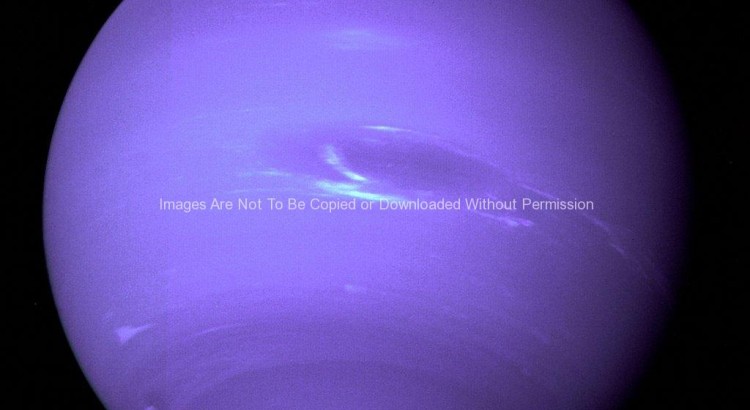
Neptune Full Disk View
NASA Stock Photos – This picture of Neptune was produced from the last whole planet images taken through the green and orange filters on the Voyager 2 narrow angle camera. The images were taken at a range of 4.4 million miles from the planet, 4 days and 20 hours before closest approach. The picture shows the Great Dark Spot and its companion bright smudge; on the west limb the fast moving bright feature called Scooter and the little dark spot are visible. These clouds were seen to persist for as long as Voyager’s cameras could resolve them. North of these, a bright cloud band similar to the south polar streak may be seen. Years later, when the Hubble telescope was focused on the planet, these atmospheric features had changed, indicating that Neptune’s atmosphere is dynamic. The Voyager Mission is conducted by JPL for NASA’s Office of Space Science and Applications, Washington, DC.
keywords: Neptune, space photos

Neptune and Tritron
NASA Stock Photos – This image was returned by the Voyager 2 spacecraft on July 3, 1989, when it was 76 million kilometers (47 million miles) from Neptune. The planet and its largest satellite, Triton, are captured in the field of view of Voyager’s narrow-angle camera through violet, clear and orange filters. Triton appears in the lower right corner at about 5 o’clock relative to Neptune. Measurements from Voyager images show Triton to be between 1,400 and 1,800 kilometers (about 870 to 1,100 miles) in radius with a surface that is about as bright as freshly fallen snow. Because Triton is barely resolved in current narrow-angle images, it is too early to see features on its surface. Scientists believe Triton has at least a small atmosphere of methane and possibly other gases. During its closest approach to Triton on August 25, 1989, Voyager provided high-resolution views of the moon’s icy surface and reveal whether Triton’s atmosphere has clouds. JPL manages the Voyager Project for NASA’s Office of Space Science and Applications, Washington, DC.
keywords: Neptune, Tritron, moon
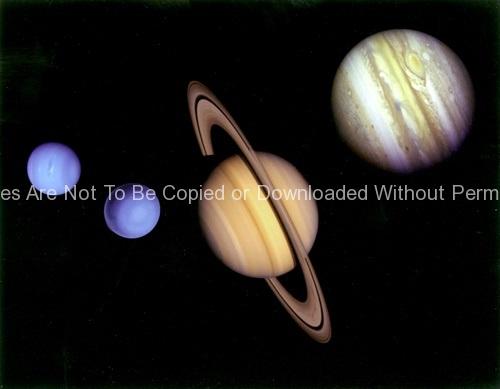
Planetary Montage
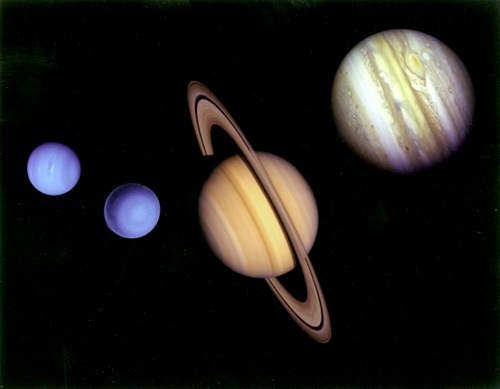
NASA Stock Photos – This montage of images of the planets visited by Voyager 2 was prepared from an assemblage of images taken by the Voyager 2 spacecraft. The Voyager Project is managed for NASA by the Jet Propulsion Laboratory, Pasadena, California.
keywords: planets
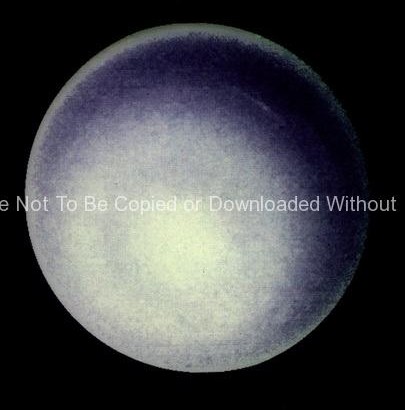
Uranus
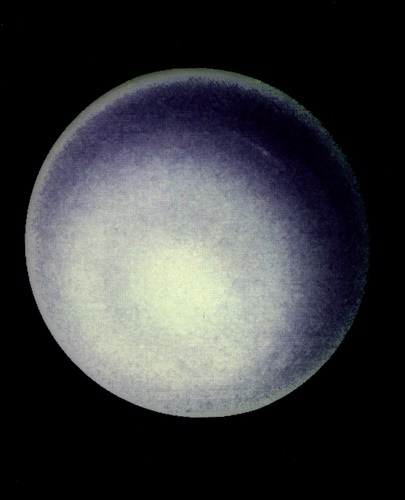
NASA Stock Photos – This computer enhancement of a Voyager 2 image, emphasizes the high-level haze in Uranus’ upper atmosphere. Clouds are obscured by the overlying atmosphere. JPL manages and controls the Voyager project for NASA’s Office of Space Science, Washington, DC.
keywords: Uranus, Voyager, NASA
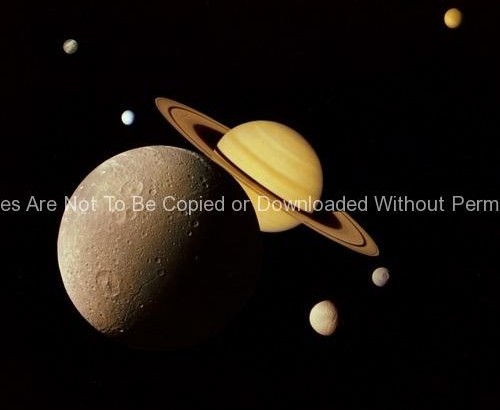
Saturn System Montage
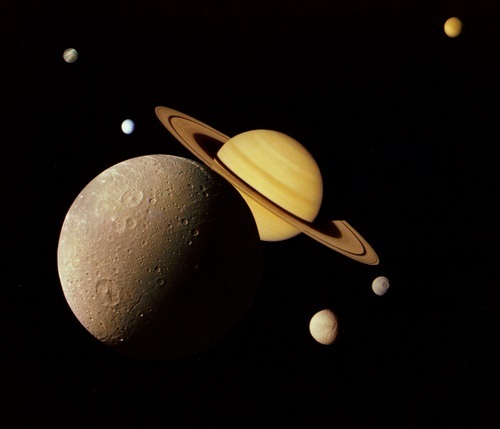
NASA Stock Photos – This montage of images of the Saturnian system was prepared from an assemblage of images taken by the Voyager 1 spacecraft during its Saturn encounter in November 1980. This artist’s view shows Dione in the forefront, Saturn rising behind, Tethys and Mimas fading in the distance to the right, Enceladus and Rhea off Saturn’s rings to the left, and Titan in its distant orbit at the top. The Voyager Project is managed for NASA by the Jet Propulsion Laboratory, Pasadena, California.
keywords: Saturnian system, Dione, Saturn rising, Tethys, Mimas, Enceladus, Rhea and Titan

Neptune’s Large Satellite Triton
NASA Stock Photos – This color photo of Neptune’s large satellite Triton was obtained on Aug. 24 1989 at a range of 530,000 kilometers (330,000 miles). The resolution is about 10 kilometers (6.2 miles), sufficient to begin to show topographic detail. The image was made from pictures taken through the green, violet and ultraviolet filters. In this technique, regions that are highly reflective in the ultraviolet appear blue in color. In reality, there is no part of Triton that would appear blue to the eye. The bright southern hemisphere of Triton, which fills most of this frame, is generally pink in tone as is the even brighter equatorial band. The darker regions north of the equator also tend to be pink or reddish in color. JPL manages the Voyager project for NASA’s Office of Space Science, Washington, DC.
keywords: Neptune, Satellite, Triton

Global Image of Io
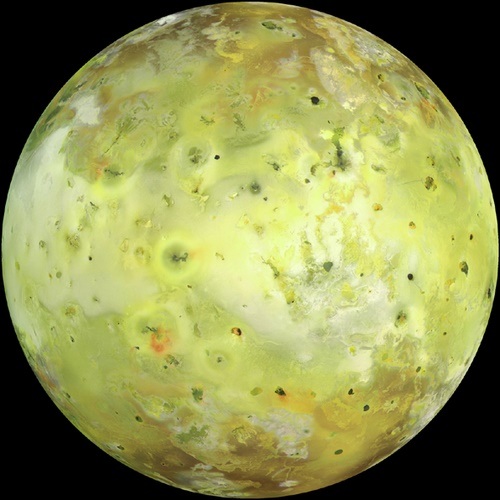
NASA Stock Photos – NASA’s Galileo spacecraft acquired its highest resolution images of Jupiter’s moon Io on July 3, 1999 during its closest pass to Io since orbit insertion in late 1995. This color mosaic uses the near-infrared, green and violet filters (slightly more than the visible range) of the spacecraft’s camera and approximates what the human eye would see. Most of Io’s surface has pastel colors, punctuated by black, brown, green, orange, and red units near the active volcanic centers. A false color version of the mosaic has been created to enhance the contrast of the color variations. The improved resolution reveals small-scale color units which had not been recognized previously and which suggest that the lavas and sulfurous deposits are composed of complex mixtures. Some of the bright (whitish), high-latitude (near the top and bottom) deposits have an ethereal quality like a transparent covering of frost. Bright red areas were seen previously only as diffuse deposits. However, they are now seen to exist as both diffuse deposits and sharp linear features like fissures. Some volcanic centers have bright and colorful flows, perhaps due to flows of sulfur rather than silicate lava. In this region bright, white material can also be seen to emanate from linear rifts and cliffs. Comparison of this image to previous Galileo images reveals many changes due to the ongoing volcanic activity. North is towards the top of the picture and the sun illuminates the surface from almost directly behind the spacecraft. This illumination geometry is good for imaging color variations, but poor for imaging topographic shading. However, some topographic shading can be seen here due to the combination of relatively high resolution (1.3 kilometers or 0.8 miles per picture element) and the rugged topography over parts of Io. The image is centered at 0.3 degrees north latitude and 137.5 degrees west longitude. The resolution is 1.3 kilometers (0.8 miles) per picture element. The images were taken on July 3, 1999 at a range of about 130,000 kilometers (81,000 miles) by the Solid State Imaging (SSI) system on NASA’s Galileo spacecraft during its twenty-first orbit. The Jet Propulsion Laboratory, Pasadena, California manages the Galileo mission for NASA’s Office of Space Science, Washington, DC.
keywords: Jupiter’s Moon, Galileo mission photos, NASA
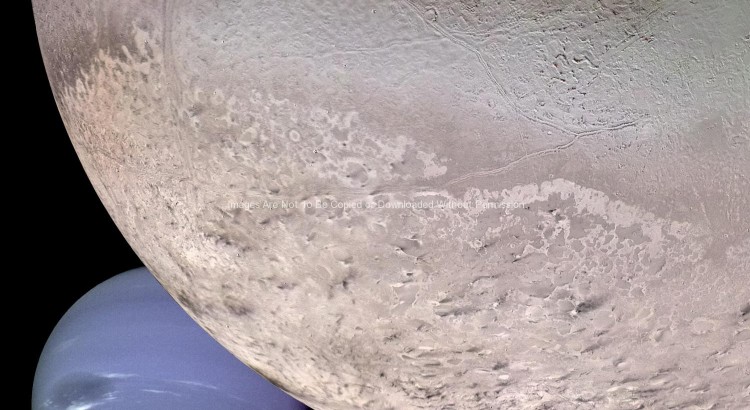
Neptune and Triton Moon
NASA Stock Photos – This computer generated montage shows Neptune as it would appear from a spacecraft approaching Triton, Neptune’s largest moon at 2706 km (1683 mi) in diameter. The wind and sublimation eroded south polar cap of Triton is shown at the bottom of the Triton image, a cryovolcanic terrain at the upper right, and the enigmatic “cantaloupe terrain” at the upper left. Triton’s surface is mostly covered by nitrogen frost mixed with traces of condensed methane, carbon dioxide, and carbon monoxide. The tenuous atmosphere of Triton, though only about one hundredth of one percent of Earth’s atmospheric density at the surface, is thick enough to produce wind-deposited streaks of dark and bright materials of unknown composition in the south polar cap region. The southern polar cap was sublimating at the time of the Voyager 2 flyby, as indicated by the irregular and eroded appearance of the edge of the cap.
Keywords: NASA, Neptune, Space photos, Triton, Moon
